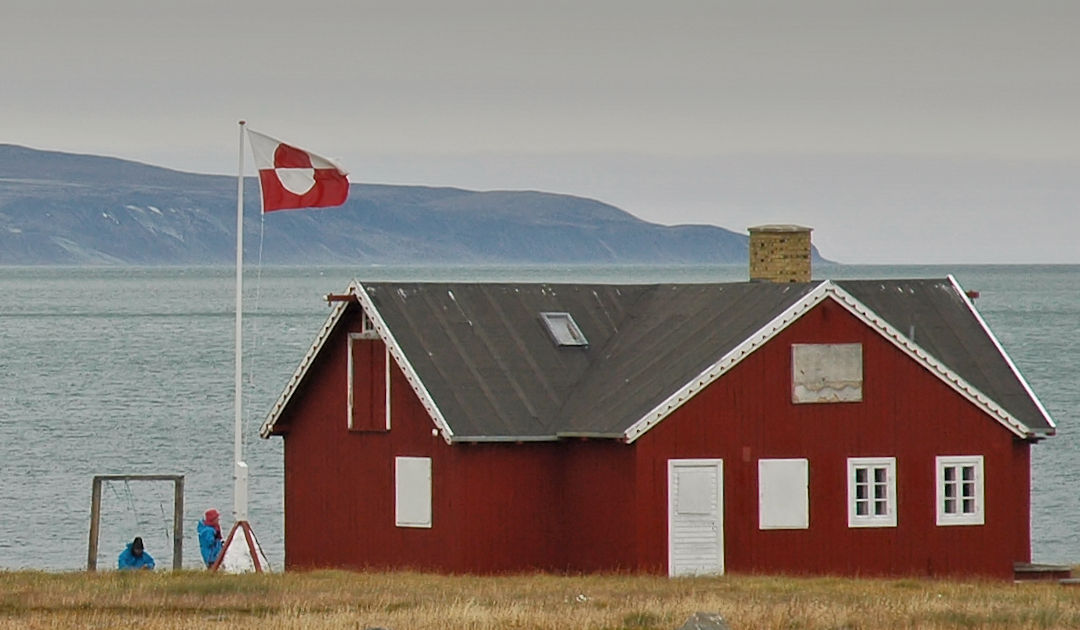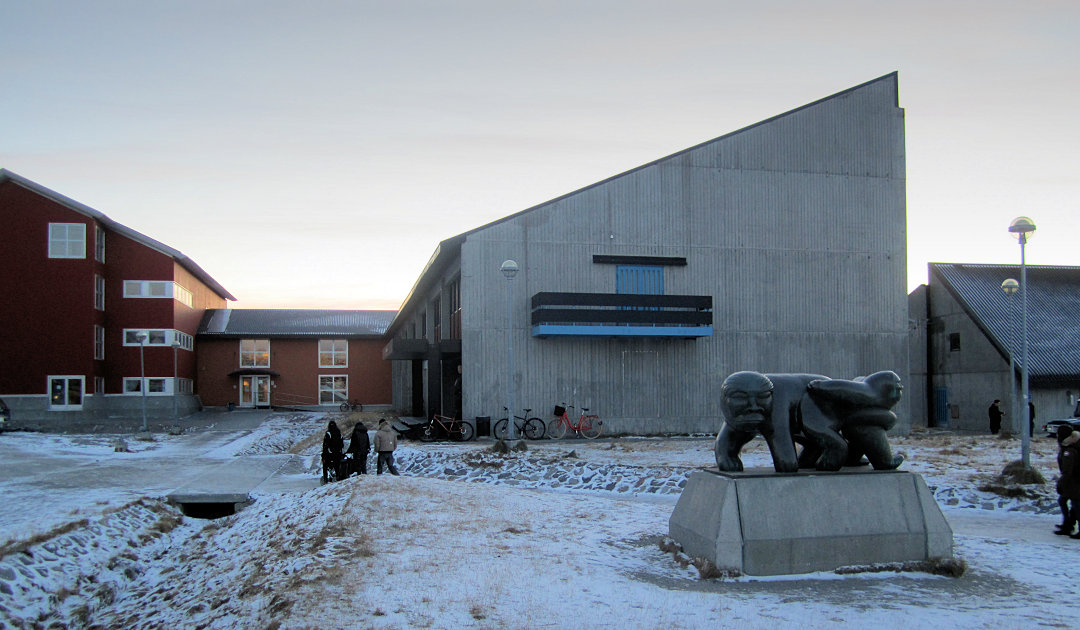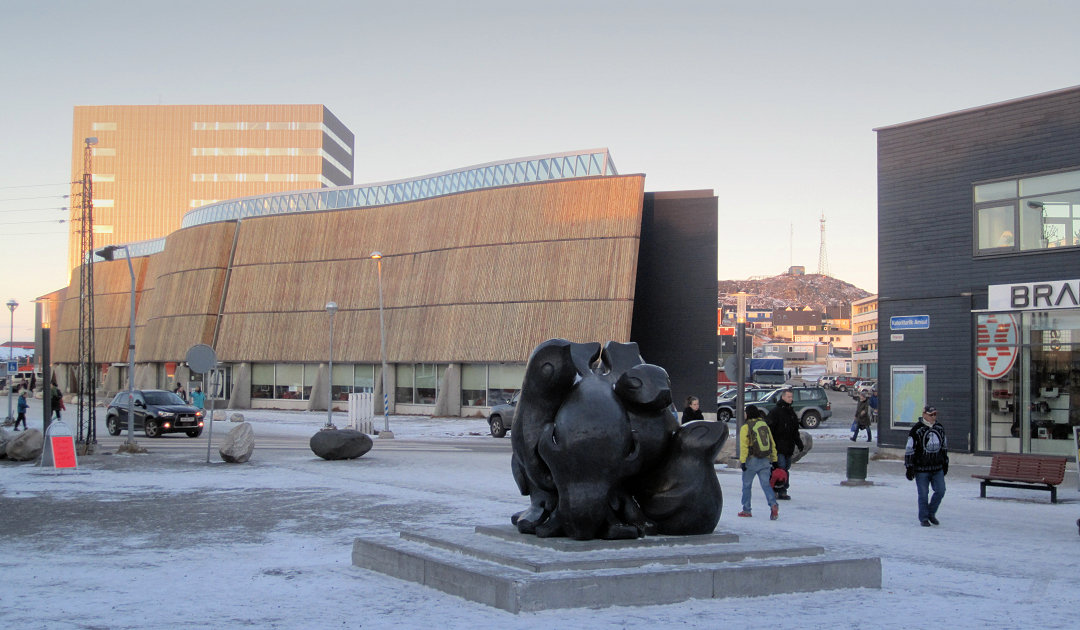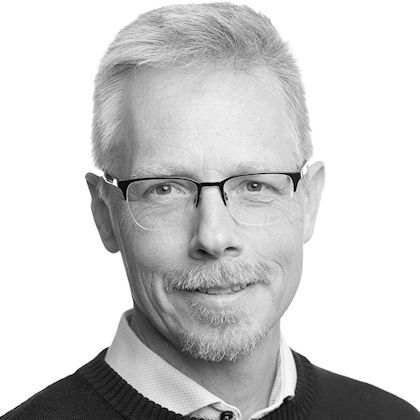
The Autumn session of Greenland’s Inatsisartut (local assembly) has just come to an end, and in addition to the standard, more mundane issues to do with fishing quotas, housing subsidies, etc., this session was characterised by a prolonged value debate about something as seemingly ephemeral as Greenlandic identity.
The complicated debate about ‘Greenlandicness’
Since 2020, Pele Broberg ─ then-member of the political party Partii Inuit ─ and other members of the assembly have demanded an Inatsisartut debate about what it means to be Greenlandic, and who should be considered to belong to the Greenlandic population. Broberg, who is now the leader of the Naleraq party, has offered criteria for consideration which include Inuit ethnicity, birthplace, and parentage, and has suggested that such criteria might be used to determine eligibility for voting rights for the Inatsisartut and, importantly, in a future Greenlandic referendum on full independence from the Danish Kingdom.
It is a question that members of the local assembly from many other parties find uncomfortable, even inappropriate. The left-wing progressive party Inuit Ataqatigiit (IA), which has been governing as a leading member in the last couple of Naalakkersuisut (government) has been reluctant to engage in such a discussion and has, no doubt, found it convenient to postpone the debate for different practical reasons, including an extraordinary 2021 assembly election. That particular election was brought about by the obviously unsustainable coalition agreement between the IA and Naleraq. A major cause of internal conflict was Broberg’s (then Naalakkersuisoq for Foreign Affairs) interview with a major Danish newspaper, in which he argued that only Inuit ought to have the right to vote in a future referendum on Greenland independence. He was quoted as saying: “Thai, Danes, English, French […] have no claim to independence. That’s Inuit. Whatever one feels or believes as an immigrant is irrelevant to the referendum debate”.

His remarks caused a major stir in both Danish and Greenland politics. The Greenland Premier, Múte B. Egede, felt obliged to publicly denounce his own Naalakkersuisoq, explaining that his government firmly believed in the strengths of ethnic diversity and in equal rights for all citizens of Greenland. Most other parties shook their heads and went public with vehement rejections of the ethno-exclusivist proposal. The Liberals in the Demokratiit party referred to Broberg’s statements as “belonging in the Soviet Union”, while the Centre-Right Atassut was outright “embarrassed” about a representative of Greenland expressing views which that party considered “extinct”, and it called on the Premier to dismiss Broberg from his position.
In Siumut, the old centre-left party, the leadership was less indignant but felt the need to distance itself from the idea also, saying that anyone living in Greenland ought to be considered Greenlandic, and thus with similar rights.
Broberg was eventually stripped of his responsibilities as Naalakkersuisoq for Foreign Affairs, the coalition fell apart and after the local elections a new coalition consisting of the two major parties, IA and Siumut, was established. To many, this was probably seen to spell a welcome break from an unpleasant public discussion about ethnic belonging and inclusion/exclusion. Their hopes, however, would be short-lived.
In opposition, Naleraq has had an even freer position from which to push for answers to the difficult question of who qualifies as Greenlandic, and after several attempts the party was successful in making that question the topic of a May 2022 debate in the Inatsisartut. It was a debate that was spurred on, amongst other issues, by the heavily press-covered difficulties a young Greenlandic student in Canada had in securing formal proof that she is Inuk ─ and thus eligible for special, Indigenous-only financial support. Unlike Canada, neither Greenland nor Denmark keep record of who qualifies for that status.

This case was the inspiration for Naleraq’s recent addition to the debate about the nature of ‘Greenlandicness’: the proposal that Greenland develop and keep an ‘Inuit Register’. The proposal included letting the registration as ‘Inuit’ determine individuals’ right to vote, also in elections for the Inatsisartut, the argument being concerns that an increase in immigration might make a minority out of Greenlanders and thus threaten their right to self-determination.
This time, Broberg’s party received at least partial support from members of the Siumut who proposed that the voting quarantine imposed on immigrants (including migrants from within the Danish state) be extended from the current six months to two years. Kuno Fencker explained the Siumut position: “There are people who have not learned our language, who might soon leave again. Such individuals should not have a vote in determining our future”. The other parties remain reluctant. The IA, for example, warns that such a change of rules might be in conflict with the UN Covenant on Civil and Political Rights, and urges patience until the ongoing Greenland Constitutional Commission is ready to conclude on matters of future Greenlandic citizenship.
Greenland nation-building and collective social identities
But what is the context of the current heated debate about collective identity on the world’s largest island?
Danish colonisation of Greenland began 300 years ago, in 1721, but it is only within the past century that Greenlanders’ political self-determination has gradually been recognised, and its formal status changed from colony over county (1953), to Home Rule (1979) and finally to receiving extended Self-Government (2009). The claim of Indigenous rights that set these developments in motion was voiced most strongly in the 1970s not, however, in the same form as it would be seen in other Indigenous communities across the Arctic. The ‘curious’ case of the Greenland claim of rights has taken the form of nationalism:
Since 1978, a national flag (Erfalasorput) has been adopted, along with a National Day (21st of June), and Danish place names have been replaced by official toponyms in Kalaallisut, the language which has also gained official status as the sole official language of Greenland. The name to set Greenland apart as a distinct Inuit nation is now Kalaallit Nunaat (‘Land of the Greenlanders’)and, importantly, with the 2009 Act of Greenland Self-Government, Kalaallit were recognised as ‘a people’ ─ thus, with the right to decide whether the Greenland nation should be independent. Today, the commonly agreed end goal (and thus the explicit purpose) of much contemporary policy-making is the full economic and political independence of Greenland.
In much of Greenland’s self-determination process, political and cultural actors have downplayed the Indigenous elements to insist, instead, on nation status, while at other times national distinctness has been constructed by way of Indigeneity. The inherent right of the Greenlandic people to self-determination, it can be argued, thus seems to have different sources, according to the notion of peoplehood subscribed to.

What remains, is an underlying current of Greenlandic nationalism in Greenland politics and collective identification. It is a current that has been described by critics as Greenlanders’ ‘mimicking’ the tradition of their Danish colonisers, and by more positive pundits as the clever appropriation of the only language that those colonisers understand and will respect.
In either case, Greenland nationalism does not necessarily sit well with pan-Inuit notions of one (Indigenous) people inhabiting Inuit Nunaat across the Danish, Canadian, American and Eastern Russian Arctic, and – as was illustrated above – is certainly no guarantee that all Greenlanders will happily subscribe to the same understanding of their nation.
A crude distinction can be made between ‘civic nationalism’ (an inclusivist form, which considers membership of the nation to be determined by adherence to shared values) and ‘ethnic nationalism’ (an exclusivist form, which considers membership of the nation to be based on common descent or kinship, shared cultural heritage and language). There are a number of positions, obviously, between these ‘extremes’. Unsurprisingly, Greenlanders position themselves along the entire continuum. One major reason is the ethno-cultural mixing of Kalaallit and Qallunaat (Danes, primarily) that has occurred through 300 years of trans-Atlantic co-existence and miscegenation, which makes the Indigenous-Nonindigenous dichotomy that exists elsewhere in the Arctic between Inuit and ‘Southerners’ (be it ethnically, linguistically or culturally defined) much more difficult to uphold.
Ongoing debates
In spite of there being no clear distinction in Greenland between Inuit and Non-Inuit ─ or, perhaps, as a consequence of it ─ attempts are continuously made to rediscover and strengthen what remains of Inuit heritage in Greenlandic culture. The decolonization movement is active — as witnessed in Danish and Greenlandic media recently, when a children’s Christmas theatre play used Inuit stereotypes for Santa’s helpers ─ and it draws heavily on a notion of (colonised) Indigeneity, as well as pan-Inuit identity.
Other visions for the Greenland nation exist, however, as witnessed in the debate that arose after the 2020 vandalization/defacing of the statue of the priest and coloniser Hans Egede in the Colonial Harbour of Nuuk. Here, the decolonizing voices were challenged by voices indicating other perceptions of ‘Greenlandicness’. As indicated also by the positions of political parties in the debate about what it means to be Greenlandic and the Inuit Register, many Greenlanders apparently lean more towards a ‘civic’ nationalism than towards an ‘ethnic’ one, if the latter means admittance to the nation requires Indigeneity (even Inuit ancestry documentation) as an entrance card.

For a small, and only recently self-governing, population like Kalaallit/the Greenlanders, there is no shortage of philosophical and existential debates about collective, social identity. To the various identity debates mentioned in this article, we can add ongoing debates about, and carried out within, the Greenland Reconciliation Commission (2014-2017), and others conducted in music, drama and literature, for instance. Another example would come from the Constitutional Commission that was set up in 2017 by the Inatsisartut. Its mandate stipulates that the constitution of the future independent country must be “based on […] the culture, language and identity of […] the Indigenous Greenland people” but also that the constitution must fully acknowledge that “in present-day Greenland there are many citizens from a different background”.
The recurring issue in a Greenlandic context remains the role of (Inuit) Indigeneity, and the question of belonging. For some, it is high time that Kalaallit shake off their colonising tackles, claim their place as an Inuit people in a country for Inuit. For others, the notion of Indigeneity as a gate keeper clashes with Greenland’s modern history and multicultural reality. In between, no doubt, we find a Greenlanders (a majority, perhaps) who can sympathise with both positions and hope that some kind of compromise might be reached. Indeed, everything suggests that here are no easy categories or dividing lines to be drawn, which means the population in Greenland are likely to be debating this for a long time yet.

Robert C. Thomsen, PhD, is an Associate Professor and Historian who specializes in social identity-building, cultural heritage and politics in the North Atlantic region and the Canadian Arctic. He is working at the Centre for Innovation and Research in Culture and Living in the Arctic CIRCLA, which is part of the Aalborg University in Denmark.
More on the subject





